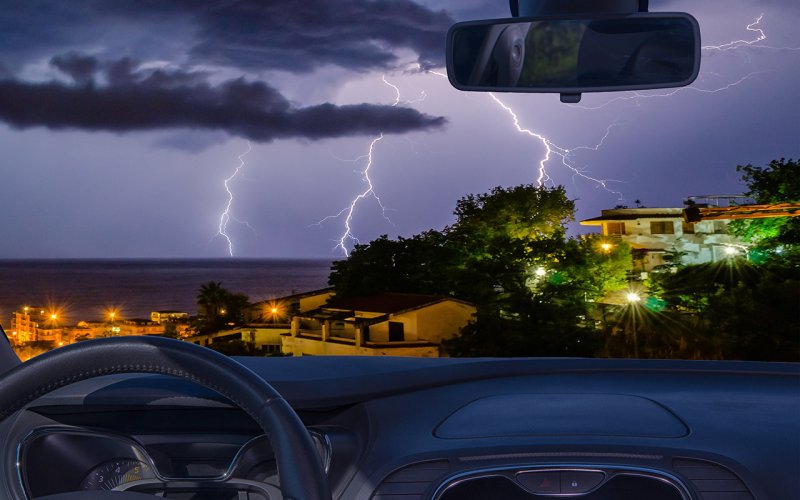Why does lightning sometimes hit a car on the road during thunderstorms, even though there are taller, wet and therefore conductive trees on both sides of the road?
Yes, it can happen, just as it is possible that the lightning does not hit the tree, but rather next to it, or that it does not “choose” the shortest path towards the ground. It is necessary to realize that lightning moves in smaller sections and only when the individual parts of the lightning reach the ground will what we call lightning happen (it is well seen in slow motion videos, e.g. here). We can imagine that the beginning of lightning shifts from one place to another, from there to a third, and so on, until it reaches the ground. The individual parts of the flash pass through places that have less electrical resistance than the surrounding ones. Therefore, if the path taken by the lightning is ready and is above, for example, a car in the mentioned case, the resistance of the remaining path (air and metal body of the car) is less than the resistance through the tree (the tree may be further, therefore it is necessary to travel a greater distance) and wet wood has a higher resistance than the metal body of the car.
In general, it is important to take into consideration that the environment in which lightning propagates has different electrical properties and therefore behaves differently and it is not possible to say in advance how lightning will always work. Lightning is more likely to strike higher places (they have to travel shorter distances with lower conductive air) and also to hit metal bodies (they have much less resistance than anything else). But the fact that lightning from a cloud high in the sky will be directed to the car on the road or to the tree next to it is not initially detected at all. It depends on the lightning’s path towards the ground.
Only after the individual parts of the lightning reach the ground (or the place where they discharge which can be other clouds) does the phenomenon we call lightning occur. Only after connecting the start and end points of the lightning will the electrons pass through the resulting conductive space and heat it to a high temperature. It’s nice to see in the mentioned videos.
Want to ask something?
Send us an e-mail with the subject “Physics mysteries” to the address:
We can't wait to tackle your interesting questions!





